The bus out to Palmyra proved to be another opportunity for cultural exchange. We arrived at the North bus terminal in Damascus and entered the first place that offered a bus to Palmyra. We were immediately rushed to get on a bus – this is a sign that we should have slowed down and analyzed this further! We bought two tickets and went immediately for the bus.
Arriving at the bus, we were a little concerned. The bus was really warm and everyone on the bus was local – and Becky’s immediate thought was that they were all men. Our seat was listed at 45-46, but as we reached the back of the bus we discovered that the seats numbers ended at 40. We took a seat in the back corner of the bus, surrounded by a bunch of young Syrian men. Scott pulled out our new translator (thanks Mom & Dad Hogue!) and tried to have a conversation with them. That lasted about 15 minutes before it because too frustrating and all parties gave up in preference for napping. Scott did manage find out they were policemen from Deir-el-Zour in eastern Syria, that none of them were married (and Sami planned not to marry) and a few other things. The usual explanation of what we were doing and how long we were gone was interesting to them, but in the end Sami was more interested in showing off his expensive (10000 SYP – $300 CAD) mobile phone. Scott thinks Sami was quite disappointed by our super-cheap mobile phone which is just a phone – no camera, video player, music player…
Fortunately, once the bus started going, the air conditioning kicked in and it became more comfortable. The seats were haphazard – the recliner working for some and not others. Becky’s was permanently in the reclined position. While Scott napped, Becky spend the 2.5 hours of the ride watching the empty desert go by. There is a lot of nothing between Damascus and Palmyra.
When we arrived in Palmyra, we were quickly ushered off the bus. As it turned out, we were the only ones getting off at Palmyra. We were quickly accosted by Muhammed, owner of the hotel Al Faris. It’s out of town, but has a great view of the ruins to the south. Talking to him, we found out that our friends had also stayed there – his description of Miroslav’s dreadlocks and the way everyone was using the kitchen to cook meals were confirmation. Between that, the nice rooms, and the price he offered, it was an easy sell.

We approached the ruins from the side – we walked straight out from our hotel until we hit the old city wall, then followed a dirt track into the ruins. There is no main “street” in the ruins, rather a series of foot paths. Apparently the main “road” was never paved to make it easier for camels to travel along. Many of the ruins are still strewn on the ground, creating mounds of rock around the various pillars that are either still standing or have been resurrected by the Syrian Department of Antiquities.
It was fascinating to just wander around the ruins. For the first two hours, we only saw one other person – a boy selling jewelry at the Diocletian’s Camp. As we were walking back along the main street, we saw a couple of folks on motorcycles going to visit the family that lives near the Diocletian camp (there is a small house there). We were amused at the modern-day camels and how they just rode the bikes right across the field of ruins.
It was very nice to wander through the ruins and take photos. Between the two of us, we took over 250 shots, and would have taken more if Scott hadn’t been shooting in RAW mode and ran out of space on his card.
As we approached the main gate, we were accosted by a couple of vendors selling things. After extensive negotiation, we bought some nice postcards from a boy (his card were nicer than the other we had seen). There was young man selling jewelry that was way too aggressive. He would not take no for an answer and he followed us for quite a distance. Becky wasn’t happy because he was leaning up against her / touching her – which is just not appropriate. She moved to put Scott between her and him. Being Canadian, she did not say anything. In hindsight, she realized that had she said something that might have got him to stop and go away sooner!
The site at Palmyra is so large and accessible that only certain portions are charged for. We declined to pay for the theater or tomb tour, but did go into the Temple of Bel – a huge complex which has been a temple to several gods, then a Byzantine church, and finally a Mosque. Remnants of all of these are visible in various forms, and lots of restoration work has been done. We initially had doubts about the cost, but in the end Scott thinks it was worth it.
On the way back to town for lunch, we decided to follow a path through the palm and olive groves rather than taking the main road. It was really neat to walk through the pathways that the locals use to get to their gardens. At one point a gentleman on a bicycle had invited us in to see his garden, but alas, we declined the invitation – we were both tired from walking and hungry. In hindsight, this was likely the most genuine invitation we received all day and would have been a nice cultural exchange.
Our interactions have been a little more guarded today, especially after the aggressive jewelry vendor. We also found the kids to be rather mercenary, with the kids on the street coming up and saying:
“Hello, what is your name?”
“My name is _____”
“Money?”
“Pens?”
This was such a contrast to the kids practicing their English with us at the Mosque in Damascus. The exchanges there were authentic and the kids never asked us for anything. From what we’ve read, Palmyra is extremely dependent upon tourism, and since 2001 tourist volumes have dropped dramatically. Thus, everyone is fighting hard for the remaining tourists and their money.
In the end, we are both extremely glad we came out to Palmyra. For the most part, the people are really nice and friendly and the sites are amazing. We would love to have had more time to wander around the desert ruins and perhaps even camp out. Unfortunately, our time in Syria is quickly coming to an end. We will definitely plan to be back – perhaps a cycling trip around Syria, Lebanon, and Turkey in the spring in a few years. March through June would be ideal!
More photos below…
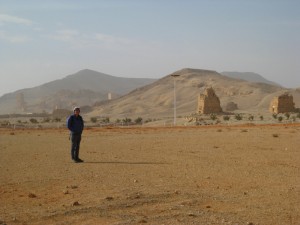
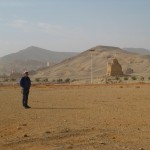
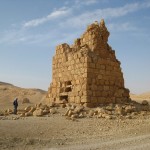
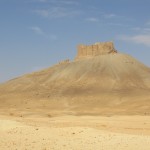
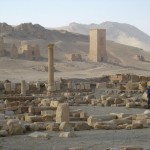
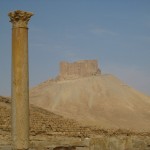
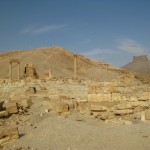
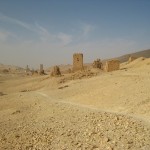
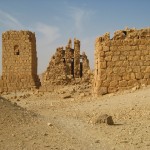
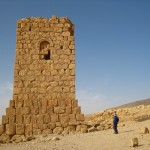
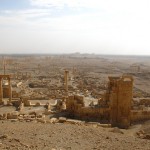

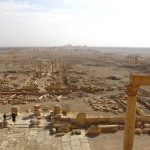
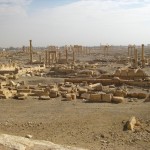
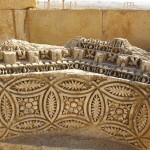
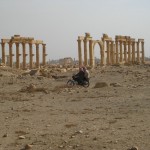
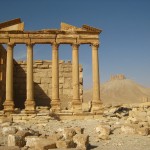

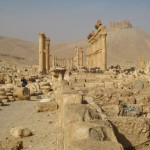
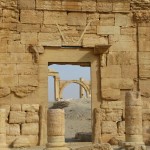
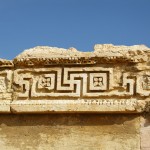
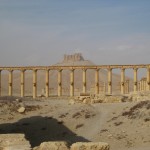
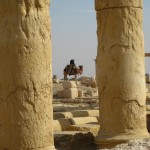
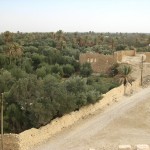
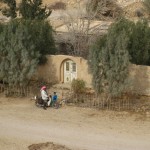
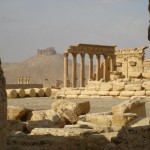
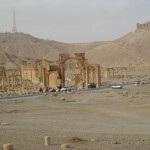
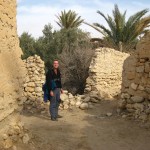

Hi, Scott and Becky,
I loved looking at your photos! I am interested in one of them. Could you email me and we can discuss it?
Linda Spiker